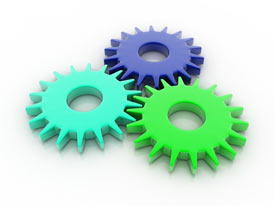 Unfortunately, it may be necessary at some point for your small business to declare bankruptcy. While it’s often a very difficult decision for small business owners to choose to file bankruptcy, in some cases it becomes necessary to preserve the owner’s finances.
Unfortunately, it may be necessary at some point for your small business to declare bankruptcy. While it’s often a very difficult decision for small business owners to choose to file bankruptcy, in some cases it becomes necessary to preserve the owner’s finances.
According to the National Federation of Independent Business, about 39 percent of businesses become profitable, 30 percent break even and 31 percent lose money, however, of all businesses, only a small percentage file for bankruptcy.
Bankruptcy is an option for business owners who cannot repay debts to settle the debt and avoid costly lawsuits and possibly losing personal assets such as their homes. After filing for bankruptcy, your creditors will typically be prohibited from collecting debts until the bankruptcy has been settled in court.
How much bankruptcy protection you will be afforded depends on the legal structure of your small business. For owners of sole proprietorships small businesses, personal assets such as homes and cars may be used to settle your business’ debts to creditors, dependent upon what type of bankruptcy you file for. Other legal structures such as corporations, LLCs and partnershipsprotect owners’ personal assets from creditors.
Chapter 7 and Chapter 13 bankruptcies typically apply to personal bankruptcies, but can also be filed by sole proprietors of businesses. Under a chapter 7 bankruptcy, certain personal assets may be sold off to pay off creditors, however there are limits to what can be sold and protections for personal property, which vary from state to state. Chapter 7 is most appropriate when the business has little or no assets and no way to move forward and repay debt.
In a Chapter 13 bankruptcy, a repayment plan is set up to pay off debt over three to five years, however the amount paid off is typically less than the full debt owed. For business owners whose personal assets are intermingled with their business assets, a Chapter 13 bankruptcy can help the business owner avoid losing his or her home.
Chapter 11 bankruptcies are mostly set up for businesses. Under a Chapter 11 plan, the debt is reorganized and the business is allowed to continue operations to generate revenue to repay the debt. Many small business owners may choose a Chapter 11 bankruptcy to allow them to continue operating their business.
Chapter 12 bankruptcies are designed for family farmers or fishermen and have certain advantages for members of those professions. Chapter 12 is considered to be less expensive and quicker than traditional bankruptcies and allows family farmers or fishermen to enter a plan to repay debt within three to five years.
 Successfully navigating through a small business bankruptcy requires experienced and competent legal help, particularly if you’re trying to use a Chapter 11 bankruptcy to keep your business open. It also requires careful planning to reap the full benefits of bankruptcy protections available to individuals and businesses.
Successfully navigating through a small business bankruptcy requires experienced and competent legal help, particularly if you’re trying to use a Chapter 11 bankruptcy to keep your business open. It also requires careful planning to reap the full benefits of bankruptcy protections available to individuals and businesses.
For the individual owners of a business, having your business structured as an LLC or corporation can help protect your personal assets should the need to file bankruptcy arise. Structuring your business as a corporation or LLC involves hiring a lawyer, but can be a potential lifesaver in businesses with a high risk of lawsuits or bankruptcy.









